
 Last night, we had theatre tickets at the KIrk Douglas Theatre in Culver City. The Kirk Douglas is the old Culver Theatre (where I used to regularly attended horror movies in college with my GF of the time), across from the Culver City City Hall, where we park. As we drove up, we were confronted with a gigantic peaceful protest of the Orange One Who Has A Stick Up His Ass About Biden.
Last night, we had theatre tickets at the KIrk Douglas Theatre in Culver City. The Kirk Douglas is the old Culver Theatre (where I used to regularly attended horror movies in college with my GF of the time), across from the Culver City City Hall, where we park. As we drove up, we were confronted with a gigantic peaceful protest of the Orange One Who Has A Stick Up His Ass About Biden.
Speaking about things up your ass.
I then learned while we were having dinner about Stephen Colbert. CBS claims it was a financial decision. Sure, when you pay 16 million to the Orange One, you have to find the money somewhere. How much does Colbert cost to produce? I’ve heard 15 million. Here’s hoping the Colbert lands on a streamer/network with guts. Kimmel is also retiring; there’s an opening at ABC, but there’s also Amazon or Netflix. (HBO is out, as they have Oliver; NBC has Fallon; and Fox has no sense of humor). Clearly, Paramount has a stick up their ass. Oh, and Trump is celebrating.
Speaking about things up your ass.
The reason we were in Culver City was to see Puppet Up, an improv comedy piece, with puppets, from the son of Jim Henson. Essentially, it is their training ground for Muppet magicians. Anyone can be a puppeteer, but this is the training ground for making the puppets come to life. As Brian Henson explained it,
I was bemoaning the fact that we would train 20 puppeteers and maybe two had the ability to ad-lib. And Mia Sara, who I was dating, said “You know, you can train that. It’s called improv comedy.” She took me to a Groundlings show, and I said “Wow, they’re really good ad-libbers.”
Mia introduced me to Patrick Bristow, who is a world-renowned improviser and trainer of improv, and we started talking about how to get our puppeteers to improv. At first, he didn’t know if it was going to work because improvisors have to watch each other’s eyes all the time to try and read each other’s minds. In the Henson Company, it’s all about the camera. We watch a monitor to see what the puppets are doing. We’d never look at each other.
We started doing these workshops and what we discovered is that it worked really well. The puppeteers could watch the monitor and read each other’s minds like in improv.
Puppet Up is what that improv morphed into, over time. There is a host who will solicit ideas and terms from the audience, and these are fit into broad pieces that are improved (for example, the trailer for a movie, or a dating game). If anything, it reminded me very much of Freestyle Love Supreme, which was an improvised hip-hop show from the brain of Lin Manual Miranda. As it is based on improv, the show essentially changes every performance, modulo some pieces (at our show, Business Business and Glowworm) that seem to be regular pieces.
Memorable pieces from our show included the dating show with a trump-loving conservative tour guide, a vegan, and a man who liked eating pet food; the audience participation bit with a concert pianist; the James Bond movie with Pussywillow; the deli on the edge of the Grand Canyon, and … well, you get the idea.
Oh, and yes, there are naked puppets.
With the increasingly bad news coming from the Trump administration, and the news about Colbert, this was just the humor that we needed. Much of the run is already sold out, but if you can find a seat, Puppet Up continues at the Kirk Douglas until July 26. Tickets and more information are available here. Puppet Up also has a website where you can sign up for their mailing list. The show was hilarious.
Cast and Crew
Puppet Up! Uncensored. Created by Brian Henson and Patrick Bristow. Directed by Patrick Bristow.
Cast (note: the cast changes every night; see this page for the current list) at our performance: Patrick Bristow Host; Bill Barretta; Grant Baciocco; Peggy Etra; Dan Garza; Brian Hensen; Ted Michaels; Kathryn Chinn Molloy; Stoph Scheer; and the Miskreant Puppets. Other performers in the rotation: Raymond Carr; Brian Clark; Ithamar Enriquez Host; Sarah Oh; Michael Oosterom; Ben Schrader; Colleen Smith; John Tartaglia; and Allan Trautman.
Production and Creative: Willie Etra Music Director; Dan Kelly Audio Supervisor; Jenna Pletcher Lighting Designer; Bishop Rhone Video Supervisor; Kate Russell Video Supervisor; Kathryn Molloy Puppet Wrangler; Rachel Burson Puppet Wrangler; Jordyn Pritsker Company Manager; Cameron Zetty Production Manager; Tim Moore Technical Director; Joe Witt Associate Producer; Brian Henson Producer; WestBeth Entertainment Producer;
Thoughts on One CTG
The Center Theatre Groups likes to promote their subscription as “One CTG”, but that’s not how the treat it internally, and that creates problems. Internally, they treat the single subscription as an Ahmanson Subscription and a Taper Subscription.
This is significant because they don’t coordinate the two, and because of the size difference between the venues, the subscriptions have different weeks. In our case, we seem to have the first Saturday of Ahmanson shows, and the last Saturday of Taper shows. This isn’t a problem if they stagger the shows right, but in the upcoming 2025-2026 season, there are two conflicts. For two of the dates, our Taper shows and our Ahmanson shows are at the same time.
If this were truly One CTG, then CTG would resolve the differences. But this being really Two CTGs, we’re on our own. The first day you can exchange tickets, its up to you to resolve things with whatever seats are available to exchange.
ETA: Oh, and it turns out that the first day you can exchange tickets … you can’t, if you are on a payment plan. They don’t bother to tell you this. I had to find out when I tried to do the exchange at the box office at Puppet Up (because I couldn’t figure out how to do things online).
CTG, this is poor form. If you want to want to be the best in customer service, you will work to resolve this. Broadway in Hollywood did, ensuring that Dolby Shows and Pantages Shows didn’t leave subscribers with conflicts. You can do better.
More importantly, if you want people to subscribe, you need to reduce the friction. CTG: Although you are great on parking and accessibility, this ticketing situation is poor customer experience. Subscribers should be easily able to find out their shows, and know that the shows as they come from the box office have no conflicts on dates. As for 5-Star Theatricals, where we’re going Saturday: Parking there — in an empty garage — has gone up to $16, and security is more draconian than going through TSA. This is a large amount of friction — so much that we’re thinking of dropping the 5-Star Subscription after this season and looking into the Rubicon in Ventura.
Don’t bemoan the fact you are losing subscribers, when you are actively making theatre uncomfortable for the subscribers.
Administrivia
I am not a professional critic. I’m a cybersecurity professional, a roadgeek who does a highway site and a podcast about California Highways, and someone who loves live performance. I buy all my own tickets, unless explicitly noted otherwise. I do these writeups to share my thoughts on shows with my friends and the community. I encourage you to go to your local theatres and support them (ideally, by purchasing full price tickets, if you can afford to do so). We currently subscribe or have memberships at: Center Theatre Group/Ahmanson Theatre; Broadway in Hollywood/Pantages Theatre; Pasadena Playhouse; The Soraya, and 5-Star Theatricals. We’re looking for the right intimate theatre to subscribe at — it hasn’t been the same since Rep East died (it’s now The Main, and although it does a lot of theatre, it doesn’t have seasons or a resident company), and post-COVID, most 99-seaters aren’t back to doing seasons (or seasons we like). I used to do more detailed writeups; here’s my current approach.
Upcoming ♦ Theatre / ♣ Music / ◊ Other Live Performance – Next 90ish Days (⊕ indicates ticketing is pending).
- July: ♦ Frozen at 5-Star Theatricals
- August: ♦ Some Like It Hot at BIH/Pantages; ♦ & Juliet at CTG/Ahmanson
- September: ♦ Shucked at BIH/Pantages; ♦ Fiddler on the Roof in Yiddish at The Soraya; ♦ Eureka Day at Pasadena Playhouse
- October: ♣ Fly Me to the Moon at The Soraya; ♦ Hairspray at 5-Star Theatricals
 This entry was originally posted on Observations Along the Road as Improv With a Hand Up Your Ass | "Puppet Up" @ CTG/Kirk Douglas by cahwyguy. Although you can comment on DW, please make comments on original post at the Wordpress blog using the link to the left. You can sign in with your LJ, DW, FB, or a myriad of other accounts. Note: Subsequent changes made to the post on the blog are not propagated by the SNAP Crossposter; please visit the original post to see the latest version. P.S.: If you see share buttons above, note that they do not work outside of the Wordpress blog.
This entry was originally posted on Observations Along the Road as Improv With a Hand Up Your Ass | "Puppet Up" @ CTG/Kirk Douglas by cahwyguy. Although you can comment on DW, please make comments on original post at the Wordpress blog using the link to the left. You can sign in with your LJ, DW, FB, or a myriad of other accounts. Note: Subsequent changes made to the post on the blog are not propagated by the SNAP Crossposter; please visit the original post to see the latest version. P.S.: If you see share buttons above, note that they do not work outside of the Wordpress blog.











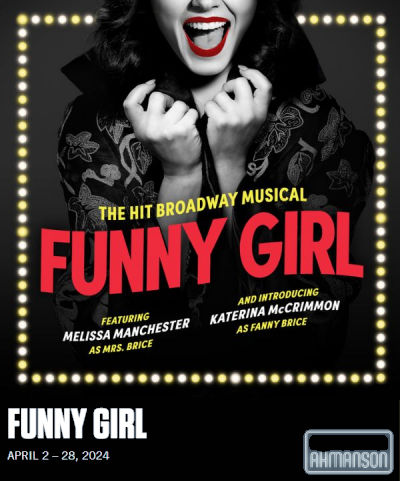

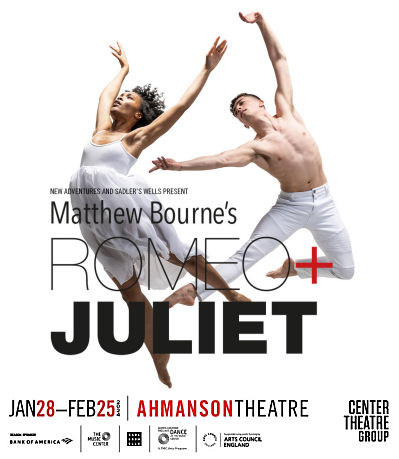

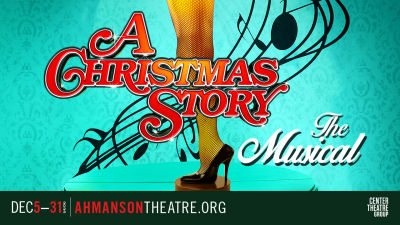

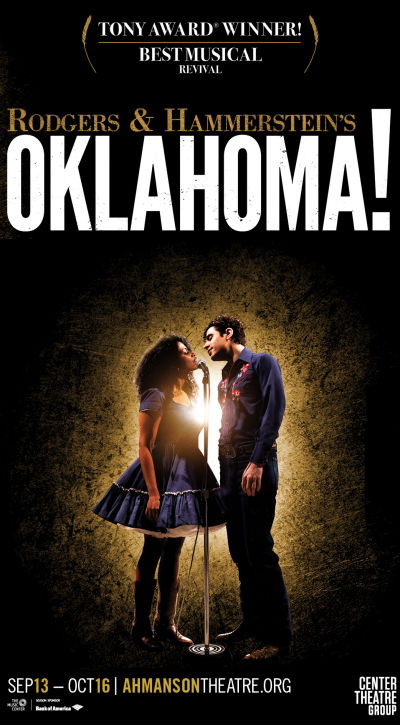

 For some reason, this summer I haven’t had the urge or the drive to write my normal full-up theatre reviews. Quite likely, it is burnout from caregiving; whatever the reason, the urge wasn’t there. But we’re entering into the Fall theatre season, and this weekend starts a series of 8 shows in a row. So I need to get the summer shows out of the way. So here are some quick takes, and I’m probably not going to go through and do the heavy linking thing (unless I go back and do it).
For some reason, this summer I haven’t had the urge or the drive to write my normal full-up theatre reviews. Quite likely, it is burnout from caregiving; whatever the reason, the urge wasn’t there. But we’re entering into the Fall theatre season, and this weekend starts a series of 8 shows in a row. So I need to get the summer shows out of the way. So here are some quick takes, and I’m probably not going to go through and do the heavy linking thing (unless I go back and do it).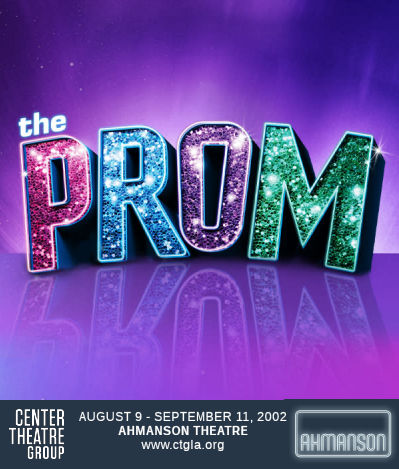 The first show we saw in August was The Prom at the Ahmanson Theatre. Let me start out by saying that The Prom is one of those few shows that I would have no qualms about seeing multiple times — it was that good and I loved the message that much.
The first show we saw in August was The Prom at the Ahmanson Theatre. Let me start out by saying that The Prom is one of those few shows that I would have no qualms about seeing multiple times — it was that good and I loved the message that much. The second show we saw in August was If I Forget at the Fountain Theatre. This show, alas, succumbed to a common trend these days: A single page information sheet with
The second show we saw in August was If I Forget at the Fountain Theatre. This show, alas, succumbed to a common trend these days: A single page information sheet with 
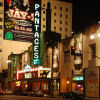

 This has been a busy but strange summer. The combination of my
This has been a busy but strange summer. The combination of my 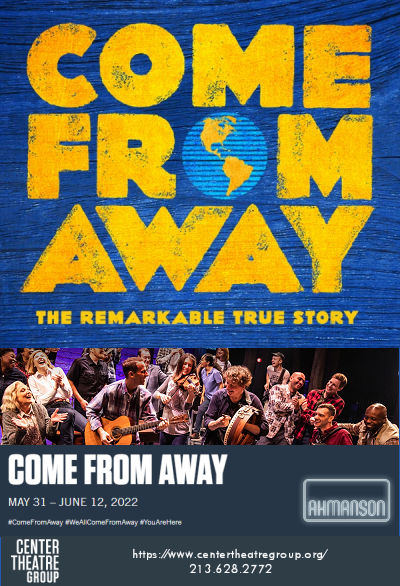

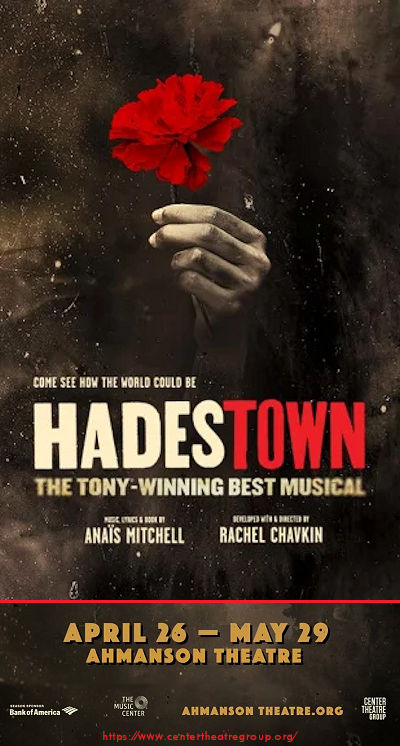

 Back in mid-February 2022, I posted my predictions for
Back in mid-February 2022, I posted my predictions for 